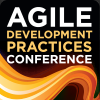Agile Development Practices 2008

PRESENTATIONS
|
Organizing to Fulfill the Product Owner Role
At Yahoo!, the product owner role is defined as the "single wringable neck" who ensures that software products and projects deliver value. Many organizations struggle to fill this role that collaborates with stakeholders to define value and manage a backlog, provides tactical support to the delivery team, and directs the product and project vision and roadmap. For most organizations, the reality is that it takes a whole team of people to fill this role. |
|
|
Overcoming the Pitfalls of Transitioning to Agile
If you've been trying to change your organization so that your projects are more agile, you may have encountered several problems-one is that it's difficult to have product management, senior management, and functional managers work together to lead in a way that makes sense for your agile project. |

Johanna Rothman, Rothman Consulting Group, Inc. |
|
Picking the Right Test Automation Strategy for Your Project
The choice of a test automation strategy is a key determining factor in whether your test automation initiative will repay your investment, or become a sink hole devouring time and money. Gerard Meszaros helps you understand what kinds of tests you should be running, which ones should be automated, who should prepare the tests, what tools they should be using, and when the tests should be prepared and run. A well-executed test automation strategy is key to preventing defects rather than finding defects after they have occurred. |

Gerard Meszaros, ClearStream Consulting |
|
Re-thinking Scheduling: Parkinson's Law Inverted
The Empire State Building-the tallest building in the world for over forty years-took just 13½ months to build. Amazing as this may seem today, it was not remarkable at the time; most skyscrapers were built in about a year. How did they do that? In those days, cash flow was more important than cost, and schedule routinely trumped scope. The paradigm was the inverse of Parkinson's Law-work should contract to fit the time allotted. |

Mary Poppendieck, Poppendieck LLC |
|
Retrospectives in Action - Looking Back at the Conference
In this last-day, last-hour session, Jean Tabaka invites you to apply a fundamental practice of agile teams-retrospection. Jean guides you in facilitating your own retrospectives about the Agile Development Practices conference you have just attended. You will mine your experiences by creating a timeline of your conference observations, your high points, your low points, and your conference activities. |
|
|
Scaling Agile Up and Out: A Tale from the Trenches
It seems like everyone wants to scale their agile teams. As projects grow in scope, the agile approach to software development needs to scale up to larger team sizes. Agile also needs to scale out to handle geographically distributed teams as businesses expand into new markets and seek the best talent available globally. These are challenging propositions for many teams. |
|
|
Scaling Agile: Kanban and Beyond...
Agile software development has been around for almost ten years. Some believe lean is the next step in our evolution. How do agile and lean play together, and what does the lean influence mean for the future of agile? Kanban is a signaling system, devised by Toyota and used in their just-in-time manufacturing process. Often, it is implemented as cards on a board that shows the status of work. |
|
|
Secrets of CMMI for Agile Organizations
Are you convinced that agile development methods and process improvement methods such as CMMI® don't go together? Have you been the victim of a ton of process overhead dropped on your head? It doesn't have to be that way. CMMI® and agile methods can work together to supercharge software development performance, gaining the advantages of agility and the repeatability, reusability, and infrastructure that process maturity provides. Jeff Dalton presents an agile approach to CMMI®, both in content and in management of the process itself. |

Jeff Dalton, Broadsword Solutions Corporation |
|
Selling Agile: Getting Buy-in from Your Team, Customers, and Managers
Are you excited by the potential of agile software development, but find that your colleagues are a bit reticent? Is your whole team ready to dive in, but your business partner is only interested in dipping in their big toe-if that? Or maybe you're wishing you could find a way to convince your clients that there's a better way to contract for a software development job-without having to do a full-blown detailed design upfront? Michele Sliger discusses all of these questions surrounding how to best "sell" agile in your organization. |
|
|
Seven Years Later: What the Agile Manifesto Left Out
Although the Agile Manifesto has worked well to help many organizations change the way they build software, the agile movement is now suffering from some backsliding, lots of overselling, and a resulting backlash. Brian Marick believes that is partly because the Agile Manifesto is almost entirely focused outwardly—it talks to the business about how the development team will work with it. What it does not talk about is how the team must work within itself and with the code. |
|


